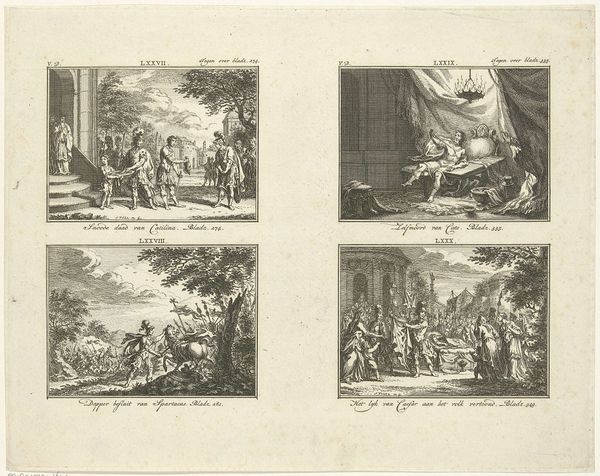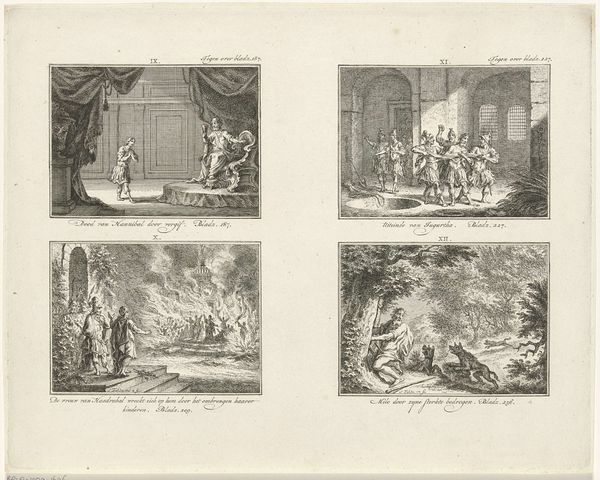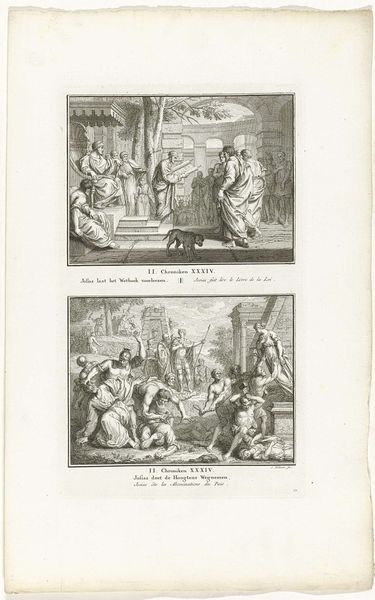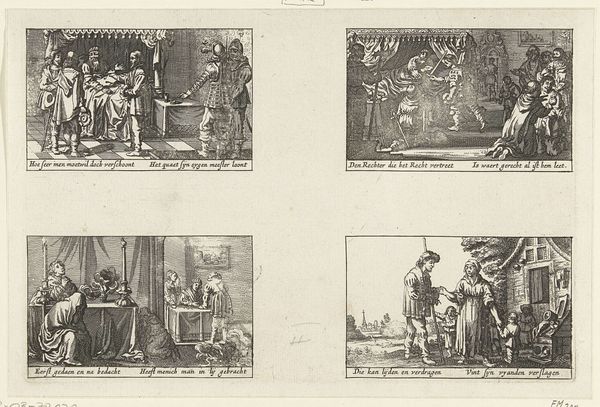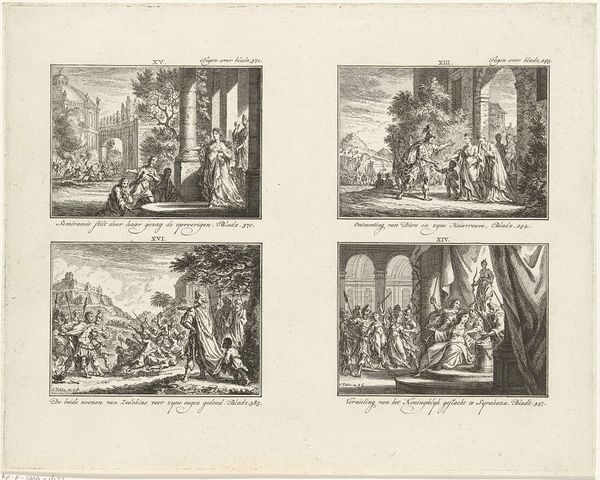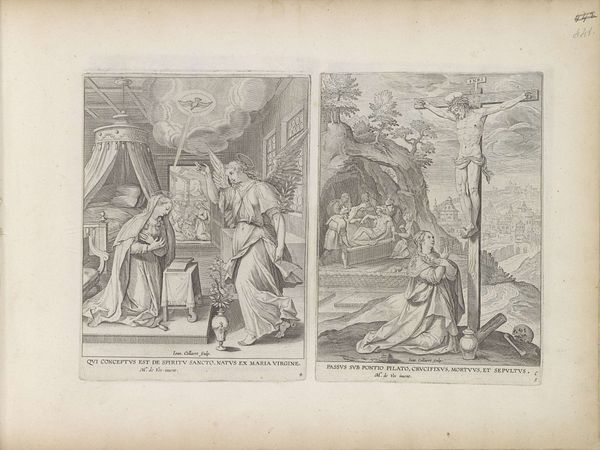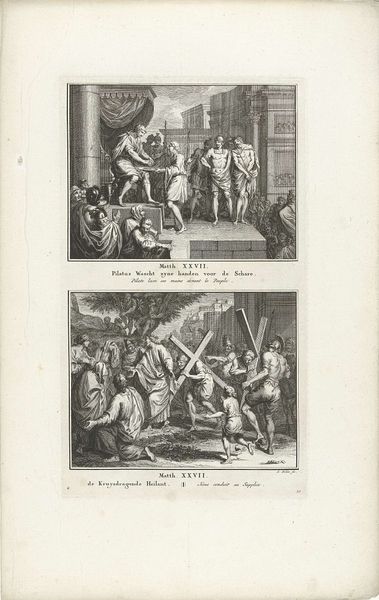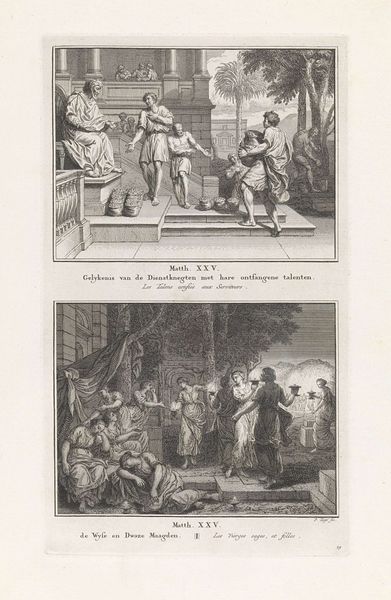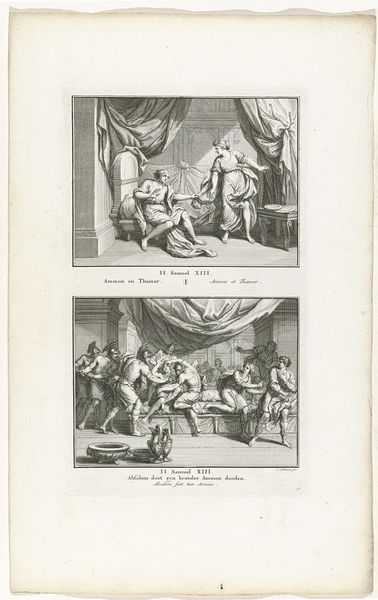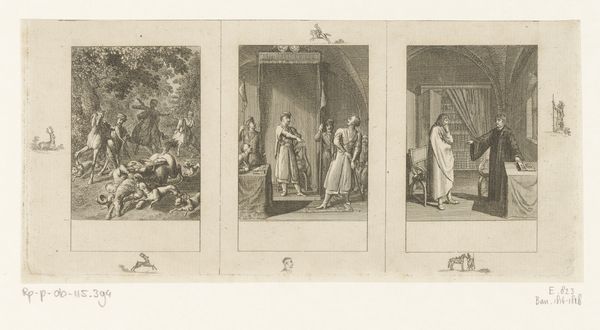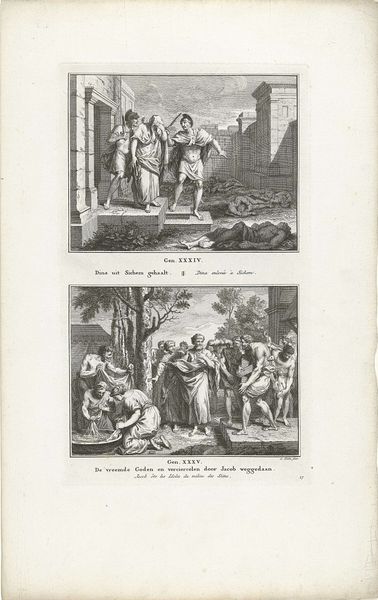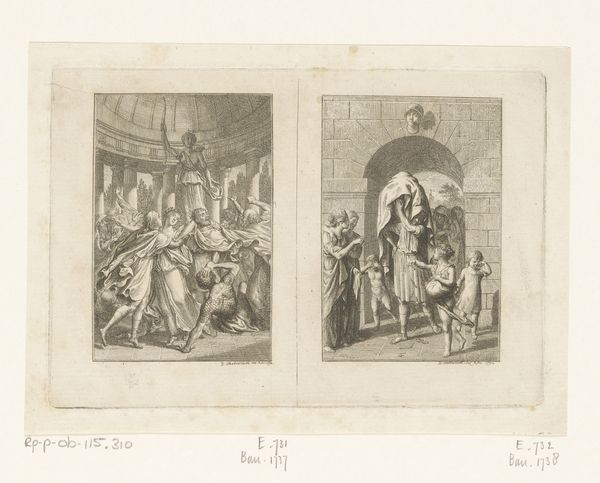
print, engraving
#
narrative-art
# print
#
old engraving style
#
classical-realism
#
history-painting
#
academic-art
#
engraving
Dimensions: height 223 mm, width 283 mm
Copyright: Rijks Museum: Open Domain
Editor: We're looking at "Four Scenes from Classical History," an engraving made sometime between 1722 and 1784 by Simon Fokke, held at the Rijksmuseum. I’m struck by the stark contrasts and the meticulous detail despite the small scale of each scene. What catches your eye about the composition? Curator: I’m immediately drawn to the organizational structure. Fokke uses a grid, a rather rigid compositional device, to compartmentalize these narratives. Note the tension created by the uniform frames against the dynamism within each scene. Consider how this choice impacts our reading of the narratives. Does it isolate them or invite comparison? Editor: That’s a great point about the grid creating both separation and a sense of unified order. I wonder if the classical realism style is just a convention of the time, or is there a message about rationalism within that artistic choice? Curator: The clean lines, the balanced compositions—these aren’t accidental. How do these elements, taken together, guide your reading? Look at the tonal variations, the strategic use of light and shadow within each frame. Notice how light highlights specific actions and directs your gaze, structuring your experience. Editor: So it's not just *what* is depicted, but *how* it's depicted—the formal elements tell us something about the engraver's intent or even the cultural values of the time? Curator: Precisely. Fokke's use of form isn't just decorative. It actively shapes the meaning. Consider how the regularity of the engraving style underscores the grand, perhaps idealized, vision of history being presented. The medium itself reinforces the message. Editor: I hadn’t considered the interplay between the medium and the message in such a direct way. Curator: This analysis reframes my view, allowing me to perceive the composition as an insightful commentary on order, structure, and the human drive to chronicle history through art.
Comments
No comments
Be the first to comment and join the conversation on the ultimate creative platform.

